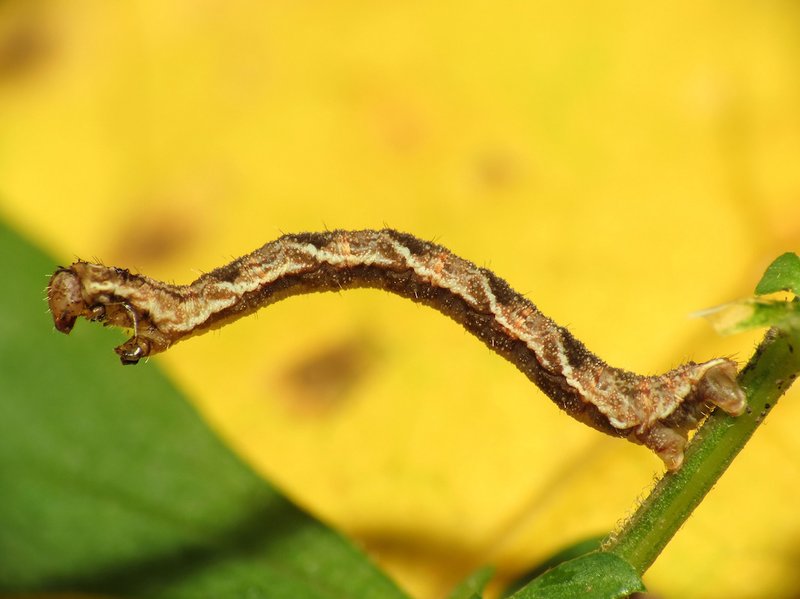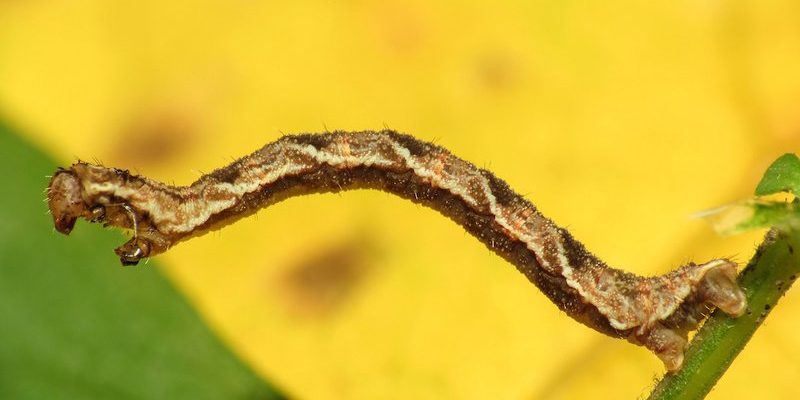
What Are Inchworms?
Inchworms are the larvae of moths belonging to the Geometridae family. You might be wondering why they’re called inchworms. It’s all in the way they move! They create a unique “looping” motion, pulling their bodies in and stretching out, almost as if they’re measuring their distance as they inch along. Visually, they can range in colors from green to brown, helping them blend into their surroundings.
These little guys have a fascinating life cycle. Like many insects, inchworms begin as eggs laid by adult moths. When the conditions are just right—think warm weather and abundant food sources—these eggs hatch into larvae, ready to start their eating spree. This brings us to the main question: what conditions spark these dramatic increases in their populations?
Weather Patterns and Seasonal Changes
Here’s the thing: weather plays a huge role in inchworm outbreaks. They thrive in specific conditions, particularly those warm and rainy spring days that signal the start of their feeding frenzy. When temperatures rise and humidity increases, it’s like opening the floodgates for inchworms.
In simple terms, these weather changes boost the availability of food. Fresh leaves on trees and shrubs provide the perfect buffet for inchworms. They are particularly fond of tender young shoots, which tend to sprout in spring. Just think about how a nice, sunny day makes you want to grab an ice cream cone; inchworms respond similarly to the right weather by getting out and eating.
The Lifecycle Connection
The connection between weather and the lifecycle of inchworms is crucial. Most species have synchronized life cycles, meaning many inchworms hatch around the same time. This synchronization helps ensure that there’s enough food for everyone when they emerge. It’s nature’s way of providing a feast!
However, if winter conditions linger or if there are sudden cold snaps, it can delay their emergence. This can lead to a domino effect—fewer inchworms emerge, which also means fewer adult moths later in the year. It’s all connected, just like a well-timed dance routine!
Predators and Natural Controls
Inchworm outbreaks don’t just happen in a vacuum. They’re impacted by predators and other environmental controls. Birds, wasps, and even other insects feast on these larvae, keeping their population in check. When the conditions are right, like when there are fewer predators around, inchworm populations can balloon.
You might be surprised how a simple change in the environment can tip the balance. For example, if a harsh winter kills off many of their natural predators, inchworms will likely thrive the next spring. On the flip side, populations can crash just as quickly if their predators bounce back or if new ones move in.
Impact of Pesticides and Human Activity
Speaking of predators, human activity plays a huge role in the equation. The use of pesticides can drastically affect the natural balance in an ecosystem. While pesticides target harmful insects, they can also wipe out beneficial predators, leading to an increase in inchworm populations.
Moreover, land development alters habitats, impacting where inchworms can thrive. Strip away trees for construction, and you could be creating a perfect storm for their population growth since they lose competing food sources but still have room to spread.
Seasonal Synchronization with Other Species
Inchworms don’t just operate solo; they’re part of a larger ecosystem. They tend to emerge around the same time as other plants and animals. For example, many birds also start nesting in spring, and their young need food. So, when inchworms pop up in large numbers, they become an essential food source for these hungry chicks.
This integration highlights the importance of timing in nature. If inchworms emerge too early, they might miss their prime food sources, like certain trees that are just starting to leaf out. Nature has its own clock, and inchworms are just one part of the symphony.
Environmental Concerns and Future Outbreaks
With climate change altering weather patterns, we might see shifts in inchworm populations in the future. Warming temperatures could lead to earlier hatching times, which may not sync up with the availability of food. This misalignment may cause some species to decline, while others could surge uncontrollably.
Additionally, increased frequency of extreme weather events, like flooding or droughts, can stress ecosystems and disrupt these insects’ life cycles. Just think about how winter storms can wipe out food sources, leading to fewer inchworms and a whole web of consequences down the line.
Inchworms are more than just tiny creatures inching along your garden. They are a crucial part of the ecosystem, reflecting the health and balance of their environment. Understanding what triggers their seasonal outbreaks helps us appreciate the interconnectedness of nature.
Remember, while inchworms can be a nuisance at times, they also support various wildlife. Every inchworm you see is a piece of a larger puzzle, ensuring that nature’s orchestra plays its beautiful melody. So the next time you spot one of these little guys, take a moment to think about the incredible journey they’re on and all the factors that influence their seasonal appearances. They’re truly an example of the delicate dance of life!

